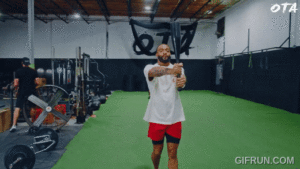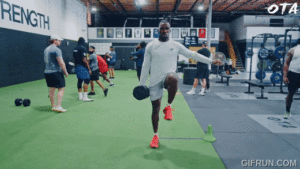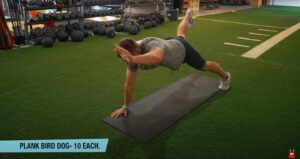Most athletes come to me knowing the “vanity” core drills: sit-ups, Russian twists, hanging leg raises. The problem is there’s no progression and without progression your trunk doesn’t get stronger in ways that transfer to the field or court.
Today, I’m breaking down the core progression every athlete should follow from anti-movements that lock down stability, to integrated patterns that link the upper and lower body for real world performance.
Why Progression Matters in Core Training
Your trunk (core) does four basic things:
- Flexion
- Extension
- Rotation
- Lateral flexion
Too many athletes jump straight into random exercises instead of progressing from resisting motion (anti-movements) → to controlled range of motion → to integrated trunk work where the upper and lower body transfer energy together.
That’s the roadmap. Let’s get into it.
Phase 1: Anti-Movements (Build Intrinsic Stability)
Start with resisting unwanted movement. These build the deep stabilizers that keep your spine and trunk locked down under pressure.
Anti-Flexion → Club Carry
- Hold a club (or dumbbell) at shoulder height
- Walk forward, resisting the pull forward
- Goal: fire spinal extensors to keep posture tall

Anti-Lateral Flexion → Suitcase Carry
- Hold a kettlebell or dumbbell in one hand at your side
- Don’t counterbalance with your other arm
- Walk 25–30 yards per side
- Goal: resist collapsing sideways

Anti-Extension → Plank Bird-Dog Hold
- Push-up position
- Raise opposite arm + opposite leg, hold
- Goal: fire glutes, lats, and stabilizers without letting hips sag

Anti-Rotation → Single-Arm Banded Backpedal
- Band anchored at one shoulder, partner provides tension
- Sit into athletic stance, backpedal while resisting rotation
- Goal: trunk fights rotation while moving the lower half
Phase 2: Range of Motion & Load
Once stability is locked in, progress to controlled range of motion with load or speed.
Club Pullover
- Simulate chopping wood
- Explosively swing down, stop at trunk level
- Trains deceleration + force absorption
Club Lunge
- Hold club statically while performing lunges
- Forces trunk to stabilize during lower body drive
Suitcase Lunge
- Lateral or forward lunge with weight on one side
- Goal: resist tipping as you decelerate into the lunge
Side Plank Hip Lift + Abduction
- Perform side plank hip lifts
- Add leg abduction for hip + trunk co-contraction
Phase 3: Integrated Movements (Transfer Power)
Now the trunk links upper and lower halves to transfer energy, exactly what athletes need on the field.
Bird-Dog Row
- One arm row while opposite leg lifts and holds
- Fires sling system (lat + opposite glute) under resistance
Rotational Work
- Wood Chops / Reverse Wood Chops (med ball or cable)
- Squat Chops — squat mechanics + rotation combined
- Lunge with Twist — rotate across the body while lunging
These mimic how athletes generate and resist force in real games, such as, absorbing, stabilizing, then exploding with power.
Key Takeaway
Core training isn’t about endless situps. It’s about progression:
- Start with anti-movements (resist flexion, extension, rotation, lateral flexion)
- Progress to controlled, loaded trunk movements
- Finish with integrated patterns linking upper and lower halves
Build your trunk this way, and you’ll develop real athletic core strength, kind that transfers into faster sprints, harder cuts, and more efficient energy on the field or court.

